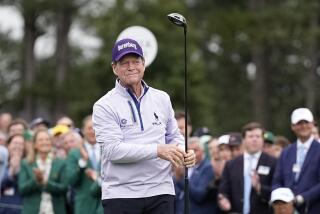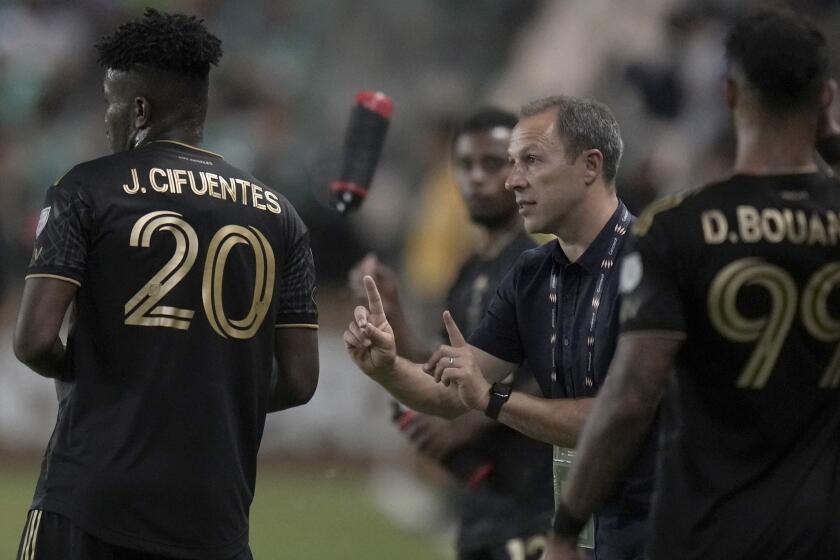GOLF / FRED ROBLEDO : A Tour of Duty for Shot at Big Money
- Share via
Chad Morris, a 26-year-old who played collegiately at Cal State Long Beach, can’t help but notice what is happening in professional golf.
He sees John Daly rise from obscurity to become an overnight sensation on the strength of a hot week during the PGA Championship.
He sees the top players earning more than $1 million a year. And that doesn’t include the off-course income many players derive from endorsement contracts.
He sees other players earning close to $500,000 without winning a tournament.
He sees a college player like Phil Mickelson step directly to the pros and hears glowing predictions about the futures of high school players Ted Oh of Torrance and Tiger Woods of Anaheim Western.
He even sees men in their 50s cashing in on golf’s seemingly bottomless money pit.
It enough to make Morris and other players wonder where the line forms to get their share.
The bad news is that the lines are long, the price is steep, and the people in line aren’t guaranteed anything.
A player needs a lot of ability and a little luck to earn a PGA Tour card. He first must graduate from a qualifying school, a three-stage event.
The final stage of qualifying school is a six-round tournament. If a player fails to finish among the top 50 in his class, it’s back to square one.
Any experience helps in dealing with the pressures of earning a tour card, and mini-tours are becoming a vehicle that golfers take to help confront pressure situations.
One of the top mini-tours--the Golden State--is operated by Doug Ives, a former sports writer. Among the upcoming Golden State events will be the Queen Mary Open, May 26-29 at Lakeside Country Club in Long Beach.
The Golden State is now in its 11th year and includes more than 80 events for professionals, seniors and amateurs. Among its graduates are former UCLA players Steve Pate, Duffy Waldorf and Jay Delsing.
The tour has 51 single-day events, 14 two-day events, 10 three or four-day events, 42 senior events and 54 amateur events.
The centerpiece of the Golden State is the Spaulding series, which is in its fifth year. In the Spaulding series, players pay an entry fee and Spaulding adds $10,000 to the purse.
For players such as Morris, it’s not the money that makes the Spaulding attractive, it’s the experience they get playing against top competition.
Morris needs the experience more than most because he didn’t play in high school and never had a junior career.
“The Golden State tour is giving me a chance to catch up,” he said.
There are other tours available such as the Canadian or Asian.
“Asia is really a great experience, but it’s expensive,” Ives said.
There is also the Nike, formerly the Ben Hogan, which sends its top 10 money winners directly to the PGA Tour, bypassing the dreaded qualifying school.
The Nike is the choice for many players after they compete in the Golden State.
Morris believes he is on the right path.
“I know the odds of making it are long,” he said. “But my game is getting better all the time, and even though the quality and depth on the Golden State has improved, I know I can play well enough to hold my own.”
Morris qualified for the L.A. Open this year, and although he didn’t make the cut, the experience added to his confidence.
“I don’t have a definite timetable,” Morris said. “I will keep trying as long as I continue to improve. I have a degree in finance, so I have something to fall back on if I don’t make it. But I believe in myself and if I can get some sponsors to help me get started, I believe I can make it.”
More to Read
Go beyond the scoreboard
Get the latest on L.A.'s teams in the daily Sports Report newsletter.
You may occasionally receive promotional content from the Los Angeles Times.










